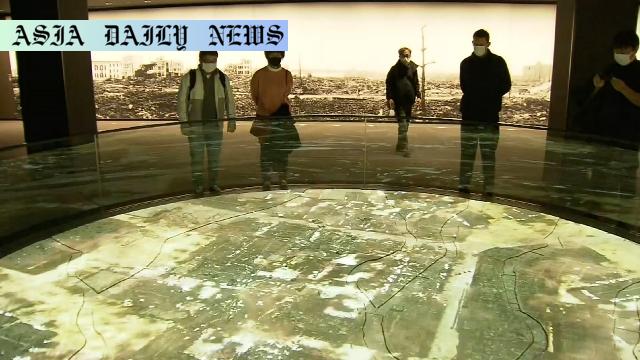Hiroshima Peace Memorial Museum: A global surge in visitors reflects increasing concern about international peace and nuclear disarmament.
Hiroshima Peace Memorial Museum attracts a record-breaking 1.984 million visitors in the current fiscal year.
The surge in visitors is linked to growing concerns about global security and nuclear disarmament.
The Nobel Peace Prize for Nihon Hidankyo and the 2023 G7 summit boosted visibility.
The museum promotes awareness of the atomic bomb’s impact and calls for peace.

Introduction to the Record-Breaking Achievement
For the second consecutive year, the Hiroshima Peace Memorial Museum has seen a record-breaking influx of visitors. Located in Hiroshima, Japan, this significant institution holds a vital place in global history as a reminder of the devastating effects of nuclear warfare and a call for peace. Between April and mid-February of the current fiscal year, the museum charted an impressive milestone of 1.984 million visitors, surpassing the previous fiscal year’s record by over 2,000 visitors—two months before the fiscal year concludes. This landmark achievement underscores the profound global interest in addressing issues surrounding peace and nuclear disarmament.
Why the Record Surge in Visitors?
The museum’s growing popularity is attributed to several factors. Museum officials believe the rise in visitor numbers reflects heightened public concern about the precarious state of international peace. With the current global security environment facing challenges, many individuals are seeking deeper insights into historical instances of nuclear devastation. Additionally, the successful hosting of the Group of Seven (G7) summit in Hiroshima in 2023 garnered significant international attention and amplified worldwide curiosity about the city and the museum. This convergence of geopolitical factors has boosted the museum’s visibility and appeal.
Highlights of the Museum
The Hiroshima Peace Memorial Museum houses more than 22,000 artifacts, documents, and personal belongings tied to the atomic bombing of Hiroshima in 1945. The items vividly illustrate the destruction caused by the world’s first wartime use of a nuclear weapon, presenting the human toll of this catastrophic event. Survivors’ accounts, photographs, and interactive exhibits enable visitors to engage emotionally and intellectually, making it a harrowing yet insightful experience. By preserving these relics, the museum strives to educate visitors about the human cost of nuclear warfare, ensuring history does not repeat itself.
The Role of Nihon Hidankyo in Advancing Peace
The museum’s efforts dovetail with the activities of Nihon Hidankyo, Japan’s national organization of atomic bomb survivors. Nihon Hidankyo was awarded the Nobel Peace Prize last year, further amplifying discussions surrounding nuclear disarmament. Such recognitions not only validate the survivors’ advocacy but also shed light on the risks associated with nuclear arms in today’s geopolitical climate. Many visitors to the museum have expressed solidarity with this cause, underscoring the institution’s broader significance beyond its immediate locale.
Global Reflections on Nuclear Threats
The director of the museum, Ishida Yoshifumi, has expressed both optimism and concern about the current trajectory of global attitudes toward nuclear abolition. While momentum for peace-building is increasing, there is also rising anxiety about the potential use of nuclear arms amidst volatile geopolitical tensions. Mr. Ishida encourages more people to visit the museum, engaging directly with the harsh realities of nuclear war as a means of fostering a deeper understanding and commitment to peace advocacy.
Future Outlook for Hiroshima Peace Memorial Museum
Looking ahead, the museum is likely to continue playing a pivotal role in global peace movements. With its growing prominence, bolstered by international awards and summits, the institution represents not just a site of historical reflection but also a beacon for future generations. Museum officials aim to further raise awareness through outreach programs and collaborations, ensuring that the lessons of Hiroshima inspire tangible progress in disarmament and conflict resolution worldwide.
Conclusion
The Hiroshima Peace Memorial Museum has transcended its local significance to emerge as a global symbol of the fight for peace and nuclear disarmament. By attracting millions of visitors annually, it continues to educate, inspire, and advocate for a more peaceful world. As the museum sets new records and propels critical conversations, it underscores the importance of learning from the past to shape a safer and more stable future.



Commentary
The Growing Importance of the Hiroshima Peace Memorial Museum
The record-breaking visitor numbers at the Hiroshima Peace Memorial Museum are a deeply encouraging development in a time when the world faces growing geopolitical instability. With nearly 2 million people walking through its halls in a single fiscal year, it is clear that global citizens are seeking to engage with and learn from history in order to address modern challenges. This trend demonstrates that, despite the polarized and turbulent times we live in, many individuals are still drawn to the ideals of peace and understanding.
A Compelling Reminder of Human Resilience
Each visitor who sets foot in the museum becomes a part of its mission to ensure that the horrors of nuclear warfare are never repeated. It’s not just the objects and exhibits that make the experience meaningful—it’s the stories they tell. The personal belongings of the victims and the accounts of survivors are potent reminders of the resilience of the human spirit and the need for unity in the face of adversity. These stories bridge cultural and linguistic barriers to resonate with every visitor who takes the time to listen.
Hope for a More Peaceful Tomorrow
As the legacy of the museum grows, so does the urgency of its message. In an age of increasing nuclear rhetoric and waning diplomacy, the Hiroshima Peace Memorial Museum stands as a testament to what is at stake. It is reassuring to know that people across the globe—young and old, from various walks of life—are engaging with this critical dialogue. Let us hope that their experiences inform future policies and actions toward a world free from the threat of nuclear war.